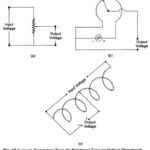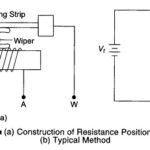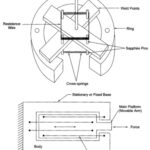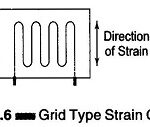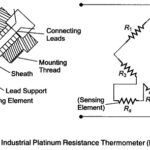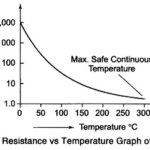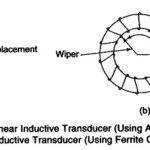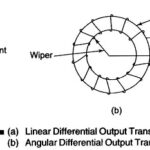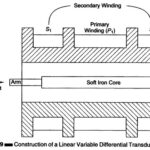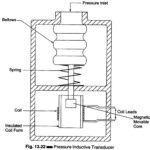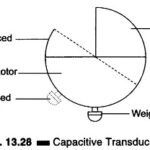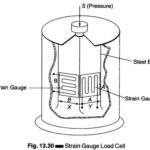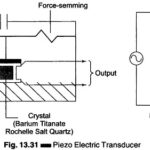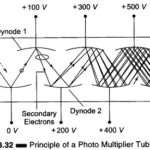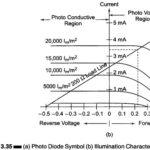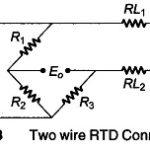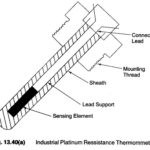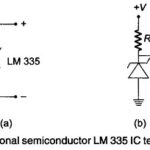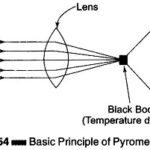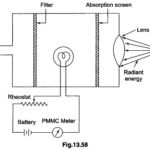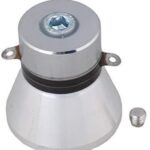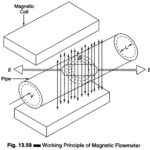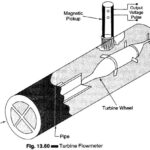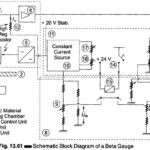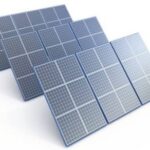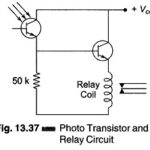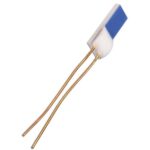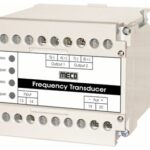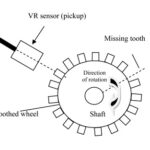Transducers Articles:
Electrical Transducer: A transducer is defined as a device that receives energy from one system and transmits it to another, often in a different form. Broadly defined, the transducer is a device capable of being actuated by an energizing input from one … (Read More)
Resistive Transducer | Resistive Potentiometer | Resistance Pressure Transducer: Resistive Transducer are those in which the resistance changes due to a change in some physical phenomenon. The change in the value of the resistance with a change in the length of … (Read More)
Resistive Position Transducer: The principle of the Resistive Position Transducer is that the physical variable under measurement causes a resistance change in the sensing element. (A common requirement in industrial measurement and control work is to be able to sense the … (Read More)
Strain Gauge Factor Derivation: The Strain Gauge Factor Derivation is an example of a passive transducer that uses the variation in electrical resistance in wires to sense the strain produced by a force on the wires. It is well known that stress … (Read More)
Types of Strain Gauge Transducer: Types of Strain Gauge Transducer are three types, namely Wire Strain Gauge Foil Strain Gauge Semiconductor Strain Gauge Wire Strain Gauge: Wire Strain Gauge has three types namely, Grid Type Strain Gauge Rossette Type Strain Gauge Torque Type Strain Gauge Helical Type Strain Gauge The grid … (Read More)
Resistance Thermometer Working Principle: The resistance of a conductor changes when its temperature is changed. This property is utilized for the measurement of temperature. The Resistance Thermometer working principle is an instrument used to measure electrical resistance in terms of temperature, … (Read More)
Thermistor Working Principle: The electrical resistance of most materials changes with temperature. By selecting materials that are very temperature sensitive, devices that are useful in temperature control circuits and for temperature measurements can be made. Thermistor (THERMally sensitive … (Read More)
What is an Inductive Transducer? Inductive Transducer may be either of the self generating or the passive type. The self generating type utilizes the basic electrical generator principle, i.e. a motion between a conductor and magnetic field induces a voltage in … (Read More)
Differential Output Transducer: The Differential Output Transducer consists of a coil which is divided into two parts, as shown in Figs. 13.17(a) and (b). (Inductive transducers using self inductance as a variable use one coil, while those using mutual inductance as a … (Read More)
Linear Variable Differential Transformer (LVDT): The differential transformer is a passive inductive transformer. It is also known as a Linear Variable Differential Transformer (LVDT). The basic construction is as shown in Fig. 13.19. The transformer consists of a single primary winding P1 … (Read More)
Pressure Inductive Transducer: A simple, arrangement, wherein a change in the inductance of a sensing element is produced by a pressure change, is given in Fig. 13.22. Here the pressure acting on a movable magnetic core causes an … (Read More)
Capacitive Pressure Transducer Working Principle: A linear change in capacitance with changes in the physical position of the moving element may be used to provide an electrical indication of the element’s position. The capacitance is given … (Read More)
Strain Gauge Load Cell Working Principle: The Load Cell is used to weigh extremely heavy loads. A length of bar, usually steel, is used as the active element. The weight of the load applies a particular … (Read More)
Working Principle of Piezoelectric Transducer: A symmetrical crystalline materials such as Quartz, Rochelle salt and Barium titanate produce an emf when they are placed under stress. This property is used in the Working Principle of Piezoelectric Transducer, where a crystal is … (Read More)
Photoelectric Transducer Working Principle: Photoelectric Transducer can be categorized as photo emissive, photo-conductive or photo-voltaic. In photo emissive devices, radiation falling on a cathode causes electrons to be emitted from the cathode surface. In photo conductive devices, the resistance of a material is … (Read More)
What is a Photodiode? A reverse biased Semiconductor diode passes only a very small leakage current (a fraction of 1μA in silicon diodes), if the junction is exposed to light. Under illumination, however, the current rises almost in direct proportion to … (Read More)
What is a Temperature Transducer? Temperature Transducer is one of the most widely measured and controlled variable in industry, as a lot of products during manufacturing requires controlled temperature at various stages of processing. A wide variety of Temperature Transducer and temperature … (Read More)
Resistance Temperature Detector (RTD): Resistance Temperature Detector (RTD) commonly use platinum, nickel or any resistance wire whose resistance varies with temperature and which has a high intrinsic accuracy. They are available in many configuration and sizes; as shielded or open units … (Read More)
Platinum Resistance Thermometer: The resistance of a conductor changes when its temperature is changed. This property is used for measurement of temperature. The Resistance Thermometer uses the change in electrical resistance of conductor to determine the temperature. The … (Read More)
Thermocouple Connection: One of the most commonly used methods of measurement of moderately high temperature is the thermocouple effect. When a pair of wires made up of different metals is joined together at one end, a temperature difference between the two … (Read More)
Semiconductor Temperature Sensing Diode: Semiconductor Temperature Sensing Diode is a versatile device and finds use in many applications. Two of its parameter, that is forward voltage drop (Vf) and reverse saturation current (Is) are temperature sensitive. The sensitivity of Is with temperature is … (Read More)
LM335 IC Temperature Sensor: IC sensor produces a voltage or current signal that increases with increase in temperature. It eliminate the linearity errors associated with thermistor. However, being semiconductor devices, they are available in both voltage … (Read More)
Pyrometer Working Principle: When temperature being measured is very high and physical contact with the medium to be measured is impossible or impractical, optical pyrometer based on the principle of thermal radiation are used. These Types of Pyrometer Working Principle are … (Read More)
Optical Pyrometer Working Principle: Any metallic surface when heated emits radiation of different wavelengths which are not visible at low temperature but at about 550 °C, radiations in shorter wavelength are visible to eye and from … (Read More)
Ultrasonic Transducer: Ultrasonic Transducer (sound vibrations above 20 kHz) are useful when we are concerned with rapid temperature fluctuations, temperature extremes, limited access, nuclear or other severe environmental requirements and measurement of temperature distribution inside solid bodies. They may be used to … (Read More)
Flow Measurement (Mechanical Transducers): The measurement of flow rate and quantity is the oldest of all measurements of process variables in the field of instrumentation. It is used to determine the amount of materials flowing in or out of a process. … (Read More)
Magnetic Flow Meters: Magnetic Flow Meters are the first type of flowmeters to be considered for high corrosive applications and for applications involving measurement of erosive slurries. These meters work on the principle of Faraday’s law of electromagnetic induction, which states … (Read More)
Turbine Flow Meter Working Principle: The Turbine Flow Meter is used for the measurement of liquid gas and gases of very low flow rate. It works on the principle of turbine. It consists of a … (Read More)
Measurements of Thickness using Beta Gauge: Beta Gauge – A common and characteristic feature of a radioactive element is that they disintegrate spontaneously to produce fresh radioactive elements called daughter elements. This activity of parent elements is termed as radioactivity. During this … (Read More)
Photovoltaic Cell Working Principle and Types of Photovoltaic Cells: The Photovoltaic Cell Working Principle or solar cell, produces an electrical current when connected to a load. Both silicon (Si) and selenium (Se) types are known for these purposes. Multiple unit silicon photo-voltaic … (Read More)
Phototransistor Construction and Working Principle: The sensitivity of a photo diode can be increased by as much as 100 times by adding a junction, resulting in an NPN device. A simple representation of the Phototransistor Construction is shown in Fig. 13.36. Illumination … (Read More)
Platinum Thin Film RTD Sensors: Platinum Thin Film RTD Sensors are manufactured by a very thin layer of platinum in suitable pattern to achieve smaller dimension and higher resistance, on a ceramic base. The deposition of layers and introduction of patterns … (Read More)
Frequency Generating Transducer: Unlike variable parameter analog transducers, frequency and pulse generating transducers measure physical variables in terms of a pulse repetition rate. Since frequency is an analog quantity, these can be treated as either analog or digital … (Read More)
Reluctance Pulse Pick up Transducer: This Reluctance Pulse Pick up Transducer is very suitable for the measurement of shaft speed and liquid flow. It is based on the principle that if the field of any magnet is varied momentarily by the … (Read More)
